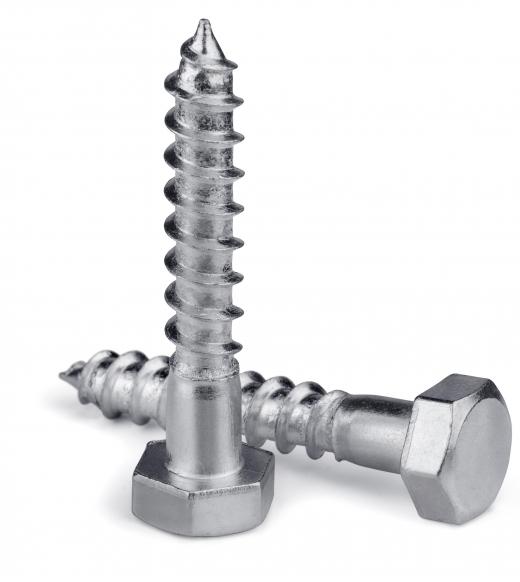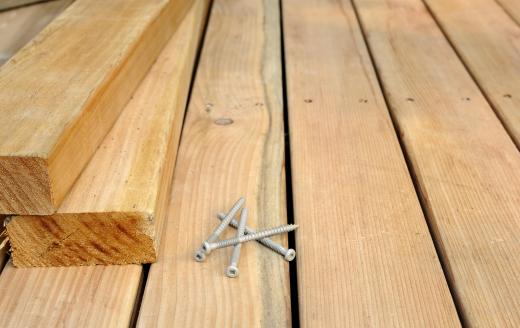A lag bolt, or lag screw, is a type of fastener used for making mechanical connections between two pieces of wood to ensure that they are held together securely. These bolts are often used to fasten large beams and posts used for decking, wooden bridges, and other wooden structures. They can also be used in concrete, but require a special insert, called a lag.
These fasteners are directly screwed into wood. They have a large head on one end and a cylindrical shaft with smooth and externally threaded parts along its length. The smooth section of the length is located directly below the head. The threaded portion contains a helical structure that allows the screw to be advanced and tightened when rotated clockwise. The thread tapers to a sharp point at its end to help engage the screw by embedding into the surface of the wood.

Lag bolts are tightened and loosened by applying torque to the head of the bolt using a tool. The head of the bolt is larger than the threaded portion to provide a positive mechanical stop and to allow a tool to be used when tightening. It also has a hexagonal shape for use with an open-end or box wrench, or ratchet.
Generally speaking, a lag bolt passes through two pieces of wood being connected to each other. The first piece of wood has a pilot, or clearance, hole that allows the bolt to freely pass through without screwing into the material. It is screwed into the second piece of wood and usually penetrates it to between one-third and one-half of its thickness.

These bolts can generate a high degree of clamping force when tightened. The mating surfaces resist the force being applied by the bolt and help to prevent the connection from loosening over time. The size selected for a particular job should be consistent with the size of the pieces of wood being connected, and the forces needed to secure the mechanical connection.
These specialized connectors are available in a variety of sizes and threads. They are manufactured using different materials for varied applications. Among the more common materials used to make them are zinc-plated and hot dipped galvanized steel — which are usually reasonably priced and provide some resistance to rust — and stainless steel and silicone bronze, for applications where high corrosion resistance is needed.
